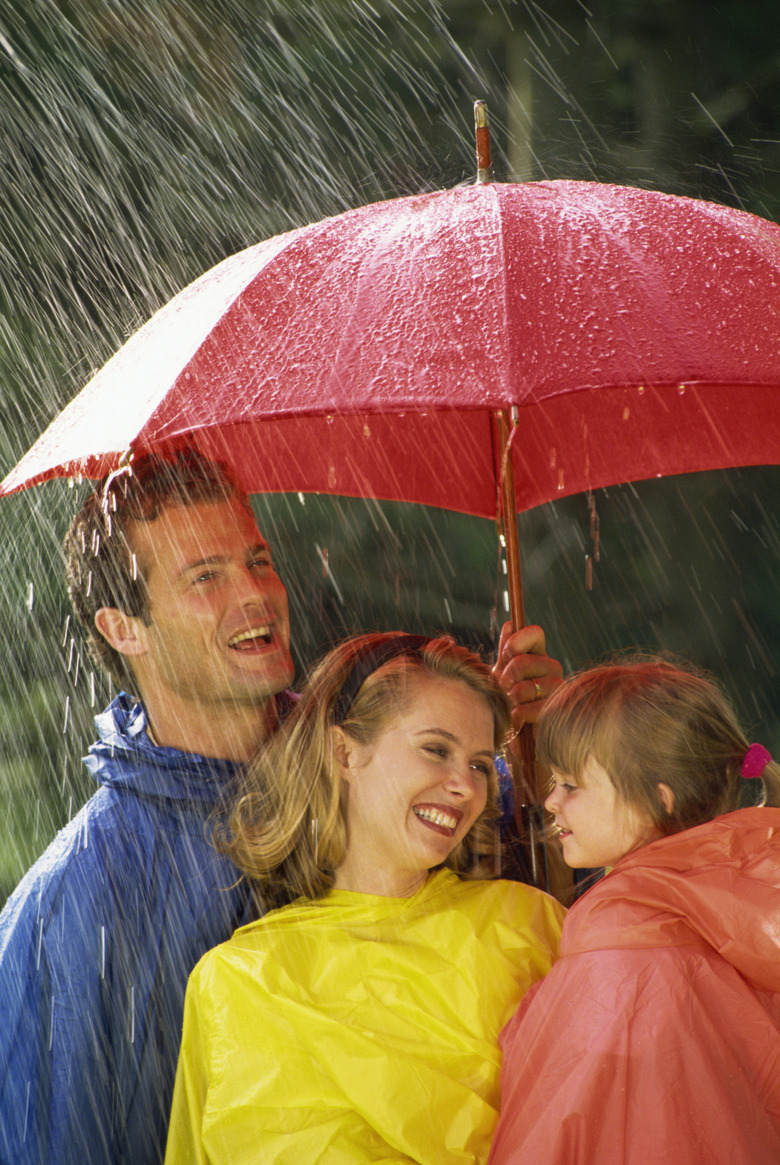What Two Planets Have Giant Storms On Them?
Imagine waking up to a weather forecast that predicted the possibility of a 350 mph hurricane paying you an extended visit. Billions of miles away, incredibly powerful super storms ravage the solar system's two largest planets: Saturn and Jupiter. Although you couldn't stand on one of the planets to witness their incredible storms, you can view images of them that spacecraft have taken.
Turbulence on Saturn
Turbulence on Saturn
In 2010 scientists photographed a large vortex on Saturn that spun away from a giant thunder and lightning storm. This vortex reached widths of up to 12,000 kilometers, or 7,500 miles, and was about the size of Oval BA, one of Jupiter's large storms. Oval BA does not produce thunder or lightning and it's not as violent as storms that occur on Saturn. You'll also find belts on Jupiter where winds move at high speeds in different directions.
Jupiter's Wandering Red Spot
Jupiter's Wandering Red Spot
Bigger than Earth and Mars combined, Jupiter's red spot is actually a massive storm that's been raging since at least an astronomer drew a picture of it in 1831. About 20,000 kilometers long and 12,000 kilometers wide, this storm maintains a fixed latitude as it moves around the planet. Winds along the storm's edges blow at 400 kilometers, or 250 mph and the storm rotates around its center every seven days. Scientists have no exact theory that explains where the red spot gets its energy.
Saturn's Super Hurricane
Saturn's Super Hurricane
Saturn's north pole harbors an intense hurricane that looks remarkably similar to ones you find on Earth. Photographed by NASA's Cassini spacecraft, this storm is approximately 2,000 kilometers, or 1,250 miles wide, and draws energy from water vapor in the atmosphere. Its eye alone is about 20 times bigger than one you'll find in a typical Earth hurricane. Scientists hope to learn more about how Earth hurricanes form by studying Saturn's.
Other Planetary Weather Facts
Other Planetary Weather Facts
Storms exist on all planets that have significant atmospheres. Mars, for instance, experiences large dust storms that move around the planet. Orbiting spacecraft have detected lightning flashes on Venus. Jet streams similar to Earth's help regulate circulation and cloud flow on planets that have significant atmospheres. While you can't witness small storms on some of these planets from Earth, you can use a telescope to study Jupiter's red spot.
Cite This Article
MLA
Lee, Kevin. "What Two Planets Have Giant Storms On Them?" sciencing.com, https://www.sciencing.com/two-planets-giant-storms-them-22503/. 24 April 2017.
APA
Lee, Kevin. (2017, April 24). What Two Planets Have Giant Storms On Them?. sciencing.com. Retrieved from https://www.sciencing.com/two-planets-giant-storms-them-22503/
Chicago
Lee, Kevin. What Two Planets Have Giant Storms On Them? last modified March 24, 2022. https://www.sciencing.com/two-planets-giant-storms-them-22503/
